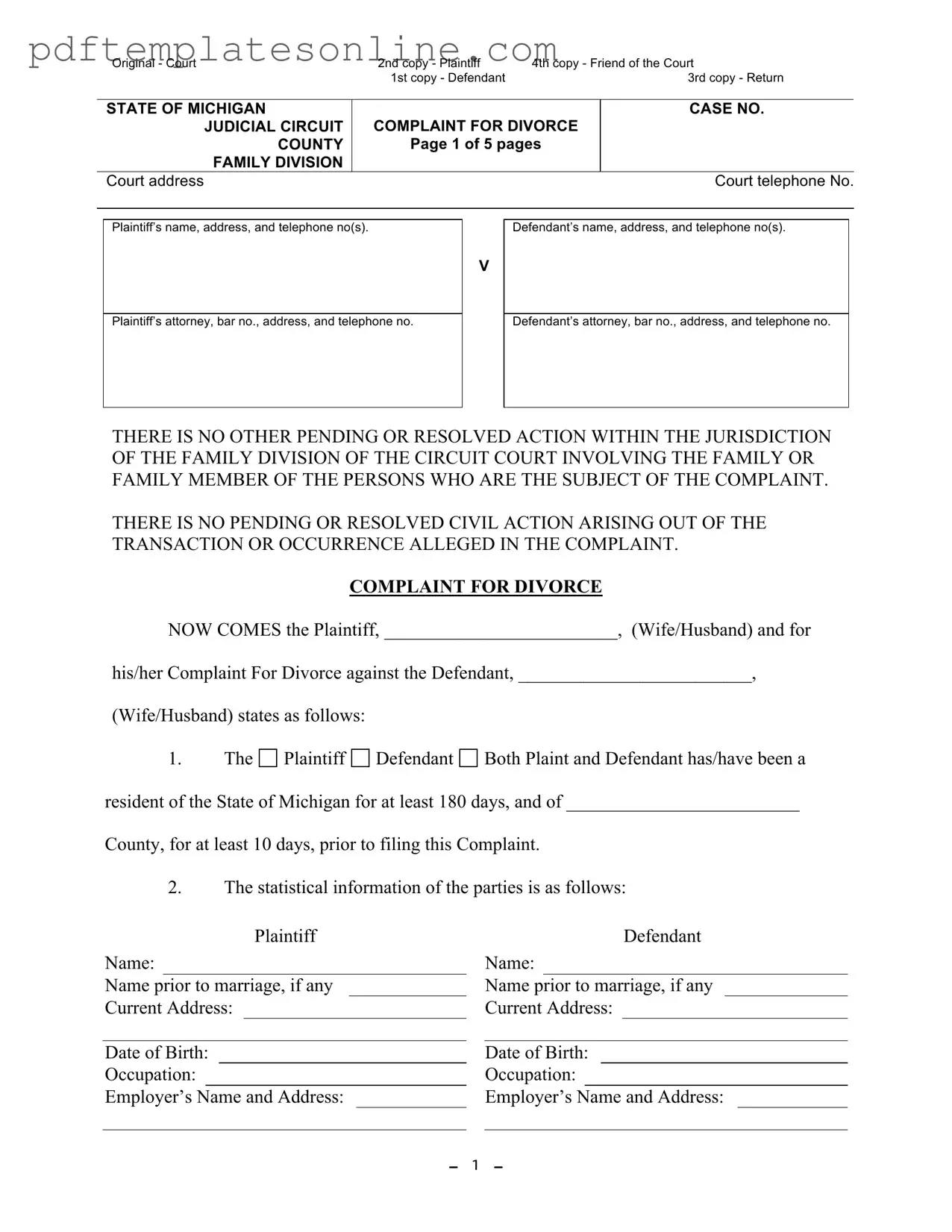Filling out the Michigan Complaint Divorce form can be challenging. Many people make mistakes that can delay the process or even lead to complications later on. Here are eight common errors to watch out for.
1. Incomplete Information: One of the most frequent mistakes is not providing complete information. This includes missing details about the plaintiff and defendant, such as addresses or phone numbers. Ensure that every section is filled out correctly to avoid unnecessary delays.
2. Incorrect Residency Requirements: It's crucial to meet the residency requirements before filing. Both parties must have lived in Michigan for at least 180 days and in the county for at least 10 days. Failing to confirm this can result in the court dismissing the case.
3. Misunderstanding Child Custody Sections: Many people overlook the importance of correctly filling out sections related to minor children. Be clear about where the children live and any previous custody proceedings. Inaccurate information can complicate custody arrangements.
4. Not Notifying the Court of Other Proceedings: If there are any other legal actions involving the family, such as child custody or domestic violence cases, it is essential to disclose this information. Not doing so can lead to legal repercussions and might affect the divorce proceedings.
5. Failing to Sign the Document: It may seem simple, but forgetting to sign the form can halt the entire process. Make sure that the plaintiff’s signature is present, and double-check that the date is correct.
6. Ignoring the Property Settlement Agreement: If there is property to divide, it’s important to address this in the form. Not mentioning a Property Settlement Agreement can lead to disputes later on. Clearly outline how property and debts will be handled.
7. Incorrectly Requesting Name Changes: If the wife wishes to restore her maiden name, it must be explicitly stated in the form. Omitting this request can lead to complications later. Be clear about what you want regarding name changes.
8. Not Seeking Legal Advice: Many individuals attempt to fill out the form without consulting a legal professional. This can lead to misunderstandings about the legal implications of what they are signing. Seeking advice can provide clarity and ensure that everything is in order.
By avoiding these common mistakes, individuals can help ensure a smoother divorce process. Taking the time to carefully complete the Michigan Complaint Divorce form can save time and stress in the long run.
